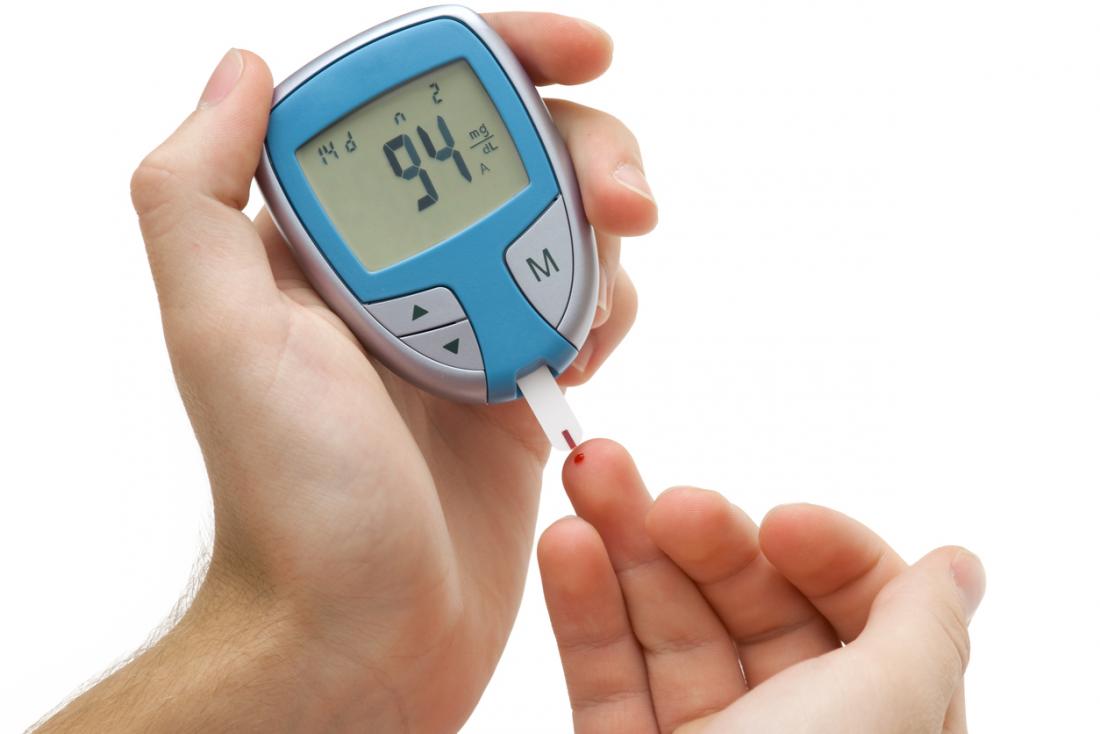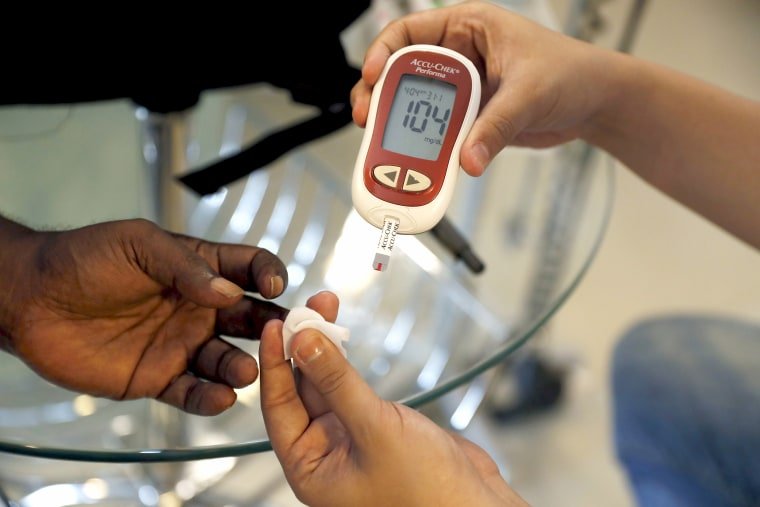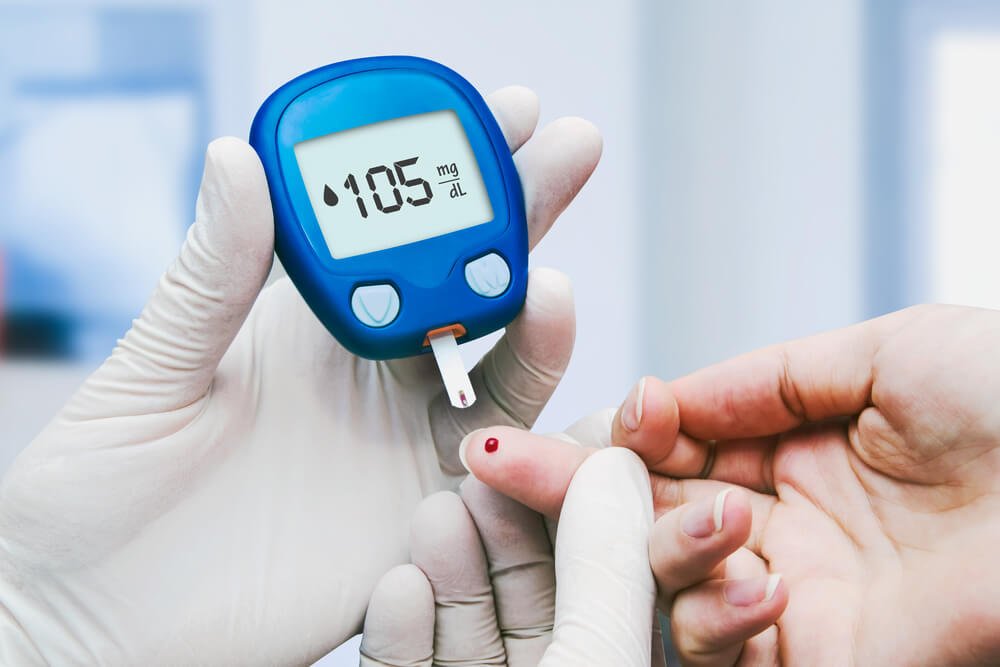How To Calculate Your Blood Sugar Level: The Complete Guide
To get an accurate reading of your blood sugar level, the best and most effective method is using a glucose meter. This will involve a small prick in your finger so receive a blood sample. The strip is then inserted into the meter and tested.
You may be wondering what your reading should be. There is no normal reading, an ideal reading differs from person to person. Everyone will get different readings at different times of the day. However, there is a rough range to determining a low, normal and high blood sugar level. Blood sugar level is read in mmol/L, which stands for millimoles per liter. Here is a guide as to what an ideal reading is for each diabetic type and non-diabetic patients:
| Child | |
| 4 5.9 mmol/L< 7.8 mmol/L | 4 5.9 mmol/L< 7.8 mmol/L |
It is advised to check it regularly if you are concerned, show regular symptoms or have diabetes. You should check before meals, exercise, before bedtime and after driving. Everyone is different so it is best to ask your doctor if you are unsure how many times and when you should check your blood sugar levels.
Research shows that over 50% who try to estimate their blood sugar level reading are incorrect. This may be due to over underlying medical conditions that did not know they had or poor lack of judgement. Therefore, this suggests it is very important to test at home to check in on your levels regularly to avoid any unnecessary future complications.
Knowing Blood Sugar Levels
If you have diabetes, the frequency of testing your blood glucose level depends on your treatment plan, so follow your doctors advice on the appropriate times for you.
Common times to check are in the morning, before and after meals, before and after exercise, at bedtime, and if you feel sick. Some people may not need to check their blood sugar daily.
What you eat and what you do for physical activity affect your blood sugar. But theres no way to know what effect they have unless you test your blood sugar.
Blood glucose meters are used to test blood sugar levels so you can see if your levels are within the target range. Your doctor will also work with you on your individualized range.
Read Also: What Is Elevated Blood Sugar
What Is The Best Time To Test For Blood Sugar
Doctors usually do a fasting blood sugar test in the morning, after fasting for 8 hours . People can do a random test or an OGTT at any time, without fasting, but the OGTT takes 2 to 3 hours to complete.
A post-prandial test is specifically for use after eating or drinking. An A1C test shows how glucose levels have fluctuated over the last 3 months.
Read Also: Medicare Requirements For Diabetic Shoes
How To Test Your Blood Sugar
To check your blood sugar level, gather your blood glucose meter, a test strip and your lancing device. See how to prepare the meter and test strip, lance your finger and get a reading using the Accu-Chek® Guide Me system by watching the video or following the steps here:
The steps are similar for many meters, and generally look like this:
Pattern : Paired Testing

This involves testing before and two hours after each meal. Its a great way to learn how different foods impact blood sugar! Curious if a meat and potatoes meal impacts your blood sugar differently than pasta or curry or casserole? Test it out!
While your glucometer will save your blood sugar data for a long time, its a good idea to record blood sugar readings. This could be either on paper, in a logbook or notebook, on an Excel document, or on a phone app. This allows you to more easily identify if there are any trends to your blood sugar.
Need a little help interpreting your blood sugar data? Your physician or certified diabetes educator can help!
Got a blood sugar testing question on your mind? Comment below with your questions!
Don’t Miss: Best Way To Eat For Diabetes
Make Physical Activity Part Of Your Daily Routine
Set a goal to be more physically active. Try to work up to 30 minutes or more of physical activity on most days of the week.
Brisk walking and swimming are good ways to move more. If you are not active now, ask your health care team about the types and amounts of physical activity that are right for you. Learn more about being physically active with diabetes.
Following your meal plan and being more active can help you stay at or get to a healthy weight. If you are overweight or obese, work with your health care team to create a weight-loss plan that is right for you.
What Should My Blood Sugar Goals Be
Blood sugar goals may be different for each person, and can change throughout the day. The American Diabetes Association recommends these blood sugar goals:
- Before meals: 80 to 130 mg/dL
- Two hours after the start of a meal: less than 180 mg/dL
- Before bedtime: 100-150 mg/dL. If the level is less than 100 mg/dL, have a snack.
Read Also: Best Time To Take Long Acting Insulin
Why Check Blood Sugars
Checking your childs blood sugar tells you the amount of glucose in your childs blood and is a key part of daily care. Each time you check, you will know if your childs blood sugar is inside or outside the healthy range set by the care team.
Checking blood sugars regularly can help you and your child:
- Feel more in control of diabetes.
- Find out how food, exercise, and diabetes medicine affect the blood sugar.
- Know when you need to make any changes to food, exercise, and diabetes medicines.
- Prevent health problems that can happen now or in the future.
How Food Affects Blood Sugar Testing
Testing your blood sugar both right before and after meals will give you an idea of how food affects your sugar levels. Ideally, youre looking for numbers of 80-130mg/dL before and less than 180 mg/dL one to two hours after eating. According to Wolf, Someone should check blood sugar before meals when they are on a medication, such as insulin, that requires them to adjust their dose based on their blood sugar reading. This so-called correction dose is given if your blood sugar is above your target. It is helpful to check blood sugar one to two hours after eating as well because it tells you how your body responded to your meal.
Don’t Miss: Treatment Of Latent Autoimmune Diabetes In Adults What Is Best
What Should I Do After I Check My Blood Glucose
Write the blood glucose number in a log book or on a log sheet , and:
- Include all of your blood glucose numbers.
- Write a comment if there is a reason the blood glucose is above or below target.
- Take your blood glucose meter with you when you are away from home.
- Know your blood glucose numbers when you call the clinic or the doctor.
- Bring your blood glucose meter and blood glucose records to all your appointments.
- Bring a list of any questions that you may have.
Right Before Lunch Or Dinner
Checking your blood sugar before your next meal can tell you two things:
- How well your body and/or medication dosages handled your last meal
- How well your body and/or medication dosages handled your blood sugar in the last few hours without food being digested.
Keep in mind that some meals take longer to digest than others. High-fat meals that are also high in carbohydrates can take many hours to digest, affecting your blood sugar for many hours, too.
A high blood sugar level before lunch or dinner could suggest:
- What you ate or drank at your last meal was more than your body could handle on your current diabetes management regimen.
- Your body may need some extra help from a diabetes medication.
- Your current diabetes medications may need a change in dosage.
- Your current diabetes medication may not be the right fit for you.
- Its time to try a different type of diabetes medication.
- Your overall insulin production or insulin resistance level has changed and your body needs more support from a new or current medication.
A low blood sugar level before your next meal could suggest:
- Youre getting too much of a certain diabetes medication .
- Your insulin sensitivity or insulin production has improved, which means your medication dosages need to be adjusted by your healthcare team.
Talk to your healthcare team about making any adjustments to your diabetes regimen to help you achieve your blood sugar goals.
You May Like: Getting Life Insurance With Type 2 Diabetes
Is There Anything Else I Should Know About A Blood Glucose Test
If you have diabetes, you may need to do blood sugar testing at home every day to help manage your blood glucose levels. There are two ways to do this:
- Blood glucose meters require you to prick your finger with a small device called a lancet. You apply a drop of blood to a test strip and insert it into a small, electronic glucose meter, which measures the glucose is in your blood.
- Continuous glucose monitors use a tiny sensor that you insert under your skin. Every few minutes, the sensor measures glucose levels in fluids between your cells. If your glucose is too high or too low, you use a blood glucose meter to check your blood levels before making changes to raise or lower your glucose level.
Sure Signs You Need To Have Your Blood Sugar Checked Now

A healthy blood sugar level is essential for overall well-being, especially if you’re diabetic. “Too much or too little blood sugar can harm our health,” Dr. Tomi Mitchell, a Board-Certified Family Physician with Holistic Wellness Strategies tells us. “When blood sugar levels are too high, it can lead to diabetes. But, on the other hand, if blood sugar levels drop too low , it can lead to dizziness, confusion, and even unconsciousness. That’s why it’s essential to maintain healthy blood sugar levels by eating a balanced diet and exercising regularly,” she adds. The Mayo Clinicstates, “A blood sugar level less than 140 mg/dL is normal. A reading of more than 200 mg/dL after two hours indicates diabetes. A reading between 140 and 199 mg/dL indicates prediabetes.” Read on for the five signs of high blood sugar to pay attention toand to ensure your health and the health of others, don’t miss these Sure Signs You’ve Already Had COVID.
Read Also: Diabetic Low Cholesterol Meal Plan
The Importance Of Checking Your Blood Sugar For Type 2 Diabetes
Hypoglycemia is when you have abnormally low blood glucose, and its one of the most common diabetes complications. To receive a hypoglycemia diagnosis, you will need a plasma glucose concentration of less than 70 mg/dL.
According to one study,² 46.5% of people with type 2 diabetes and 83% with type 1 diabetes get hypoglycemia. Type 2 diabetes can lead to severe hypoglycemia complications when its uncontrolled. Another study³ said it can increase your chances of death by six times.
When Is The Best Time To Check Blood Sugar In Type 2 Diabetes
Type 2 diabetes: how often to test blood sugar? The best time to check your blood measurements is in the early morning before breakfast. This way, the figures will be correct. After that, you can try checking on your results 2 hours after the meal. This method is less accurate, but it is the only way for those patients who need several testing procedures per day.
Don’t Miss: Insulin Pills For Type 1 Diabetes
How Do I Take Care Of My Blood Glucose Meter
- Set the date and time when you get a new meter.
- Make sure the date and time are right each time you use your meter.
- Use the control solution as needed. This will let you know the meter and test strips are working right. Use it:
- When you get a new meter.
- When you get new test strips.
- When you think that the meter is not giving you the right blood glucose number.
Hours After Eating A Meal
Checking your blood sugar approximately one-to-two hours after eating is hugely important, because it tells you if your body has the tools it needs in order to handle your meals. Being consistently higher or lower than your goal range after eating can tell you some very important and clear things about your current diabetes management regimen.
A high blood sugar level one-to-hours hours after eating could suggest:
- What you ate or drank at your last meal was more than your body could handle on your current diabetes management regimen.
- Your body may need some extra help from a diabetes medication.
- Your current diabetes medications may need a change in dosage.
- Your current diabetes medication may not be the right fit for you.
- Its time to try a different type of diabetes medication.
A low blood sugar level in the hours after eating could suggest:
- Youre getting too much of a certain diabetes medication .
- Your insulin sensitivity or insulin production has improved, which means your medication dosages need to be adjusted by your healthcare team.
Talk to your healthcare team about making any adjustments to your diabetes regimen to help you achieve your blood sugar goals.
Don’t Miss: Diabetes Shot Once A Month
What Is Blood Sugar
Dr. Mitchell explains, “Blood sugar, also known as blood glucose, is a type of sugar found in the blood. It is the body’s primary source of energy and comes from the food we eat. When we eat, our digestive system breaks down the carbohydrates in our food into glucose, which is then released into the bloodstream. The pancreas, a small organ located behind the stomach, produces a hormone called insulin, which helps to move the glucose from the blood into the cells of the body, where it can be used for energy.”
You Experience Sudden Mood Swings Or Feelings Of Irritability
Dr. Mitchell explains that, “Sudden mood swings or feelings of irritability can be a sign that your blood sugar levels are off balance. When blood sugar levels are too high or too low, it can cause problems with focus and energy levels, which can lead to feeling cranky or on edge. If you’re experiencing sudden mood swings or irritability, it’s a good idea to check your blood sugar levels and see if they are in the normal range. If they’re not, you may need to adjust your diet or take medication to bring them back into balance. Either way, it’s important to talk to your doctor so that you can get your blood sugar levels under control and feel better.”6254a4d1642c605c54bf1cab17d50f1e
Also Check: Best Pills For Type 2 Diabetes
What Else Can I Do To Help Manage My Blood Sugar Levels
Eating a healthy diet with plenty of fruit and vegetables, maintaining a healthy weight, and getting regular physical activity can all help. Other tips include:
- Keep track of your blood sugar levels to see what makes them go up or down.
- Eat at regular times, and dont skip meals.
- Choose foods lower in calories, saturated fat, trans fat, sugar, and salt.
- Track your food, drink, and physical activity.
- Drink water instead of juice or soda.
- Limit alcoholic drinks.
- For a sweet treat, choose fruit.
- Control your food portions .
You Have Difficulty Concentrating Or Focusing On Tasks

Dr. Mitchell states, “When you have difficulty concentrating or focusing on tasks, it may be a sign that you need to get your blood sugar levels checked. High blood sugar can cause damage to the tiny blood vessels that supply oxygen and nutrients to the brain. This damage can lead to problems with thinking, speaking, and learning. In addition, high blood sugar can also cause mood swings and irritability. If you are experiencing any of these symptoms, it is important to see your doctor for a blood sugar test. Getting your sugars checked is an important step in maintaining your overall health.”
You May Like: Diabetic Diet Type 1 Meal Plan